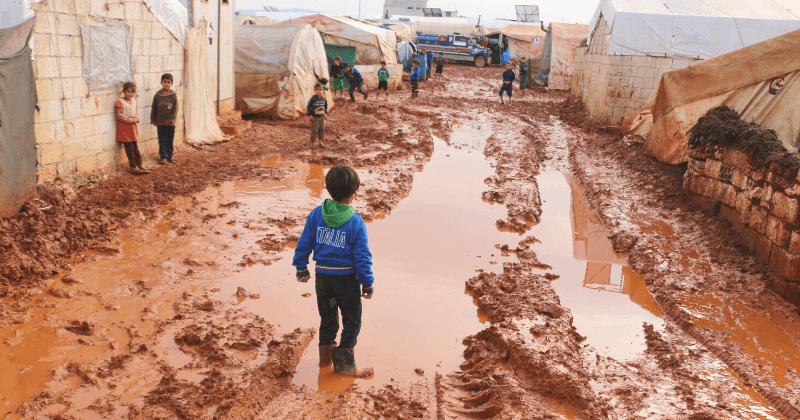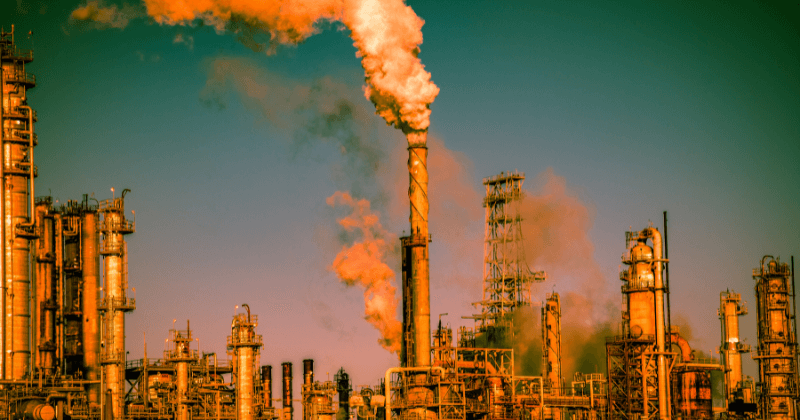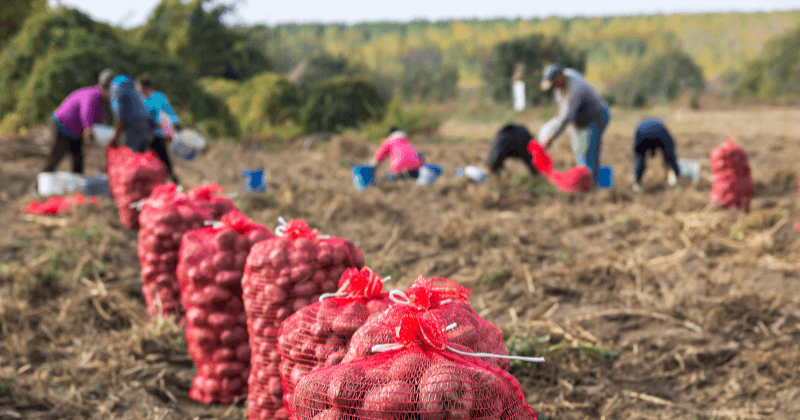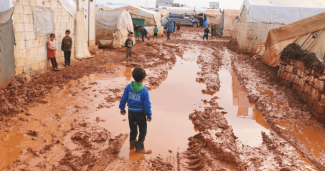When A Climate Crisis Pushes Families to Flee

[Editor's Note: Today is International Migrants Day. Here, we explore how the climate crisis fits into the numerous pressures that families face when deciding to migrate.]
No one migrates without reason. Every day, people make the nearly impossible decision to leave their homes and cross international borders. There are countless reasons to leave, be it to seek asylum from an unsafe home life or oppression, or simply to seek work, opportunities, and a better life. But in recent years, the climate refugee has become more central to the conversation of migration.
Climate refugees are pushed from their home countries by the disastrous impact of climate crisis, often occurring on top of their preexisting tenuous life circumstances. Worsened weather events like hurricanes and tropical storms, which are growing stronger and more common due to the climate crisis, as well as changes to long-term climate patterns such as droughts or increased rainfall, have jeopardized the way of life for countless people, destroying crops they relied on, or flooding a home when their extended family had already been driven out of the community, leaving a family without the resources to recover. In other words, climate disasters are frequently the last in a long string of disparities, setbacks, and dangers that force families from their homes. Following these disasters, many families are left without clean, safe water, consistent access to food, and risk increased exposure to pathogens, insects, or extreme heat. To put it simply, things go from bad, to worse, to nearly unlivable.

And yet, the climate crisis is not the result of migrants or the nations they are forced from. In the United States, consumption patterns and high-emission industries continue to have incredible consequences on the environment. The US and other developed nations are responsible for most greenhouse gas emissions. Residents in these countries have greater resources to bounce back from climate-related disasters than those in less-developed nations lack. Much of the climate migration seen coming out of the most vulnerable nations is the result of these inequities. Nations are seeing increased movement as a result of climate change. An estimated 5.9 million were displaced by climate disaster in 2021 alone. For many, climate may not be the only instigator for migration, but the most acute one that makes life untenable for millions every year.
When migrants are pushed from their homes by climate change, they are pulled towards other options. Many of these migrants come to the United States where they find high-risk jobs such as farm work and construction. Some even find work cleaning up after climate disasters here in the United States. The hazards workers face in these jobs such as heat and wildfires are often amplified because of the climate. “The painful irony here is that workers that are pushed for the homes due to the climate find jobs in the US where they are made more vulnerable because of the climate,” notes Amy K. Liebman, MPA, MCN’s Chief Program Officer for Workers, Climate, and Environment. A lack of worker protection leads these climate migrants to work under dangerous conditions.

The United States is getting hotter, and immigrant farmworkers are far more likely to be exposed to, and sometimes killed by, extreme heat during their jobs. Farmworkers are 20% more likely to die from extreme heat and resulting illnesses than other workers. Many farmworkers have expressed that they have no choice but to work in these dangerously hot conditions. An estimated 74% of these farmworkers are born outside of the US and around 50 percent do not have authorization to legally work in the United States. This low-wage, overworked group of laborers are incredibly vulnerable, partially because they are afforded fewer labor and health and safety protections than workers in other industries, and partially due to their socioeconomic and migratory status.
While a national standard for heat is ostensibly on the way, as of now, no such regulation exists outside of a few states. The documentation status of some workers can make them even more vulnerable, as they may face intimidation from employers and threats of deportation if they organize for better workplace safety standards or refuse to work in unsafe conditions. Those who are most vulnerable continue to face the consequences of climate change, even after traveling thousands of miles to escape climate catastrophe.
Those who have been forced from their homes deserve dignity, good health, and the opportunity to seek out safe work. They need enforceable, reliable heat standards and other regulations that protect them on the job. They should have access to health care for any need. Yet, the need is even bigger; hundreds of millions more – possibly a billion people -- could be forced from their homes, should the climate crisis continue at the speed at which it is advancing. The best way to serve these climate migrants is to prevent their need to migrate in the first place. Massive, worldwide, and multisector action to immediately suspend the emission of greenhouse gases, while also building natural carbon sinks, reducing and reversing environmental degradation, and doing so while centering equity would keep us from the reaching the terrifying tipping points that will destabilize the planet and human communities.
- Log in to post comments






